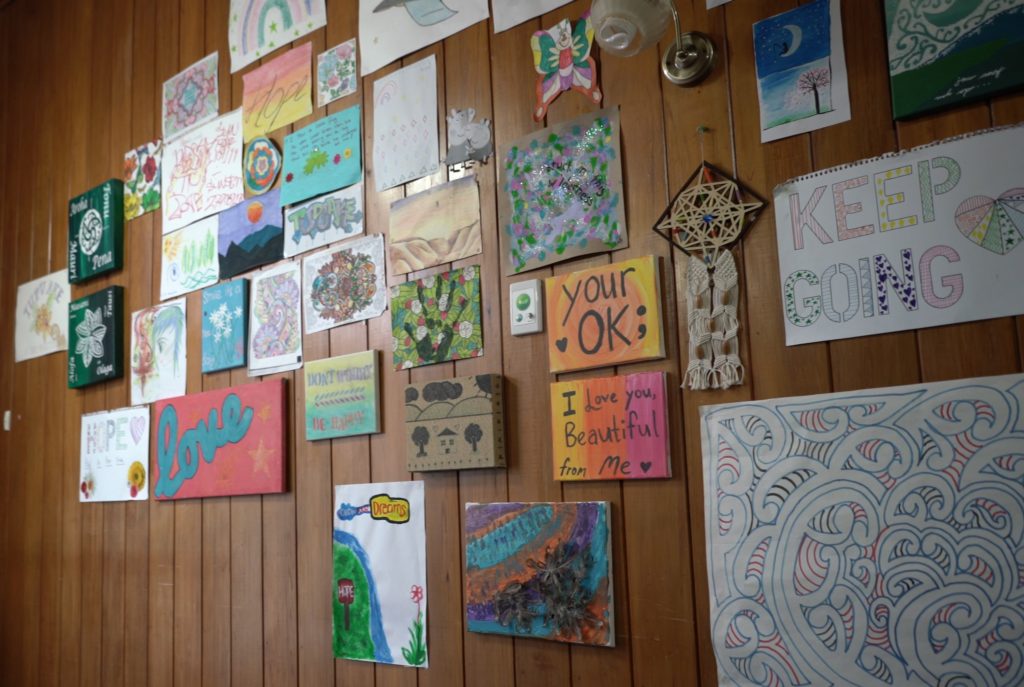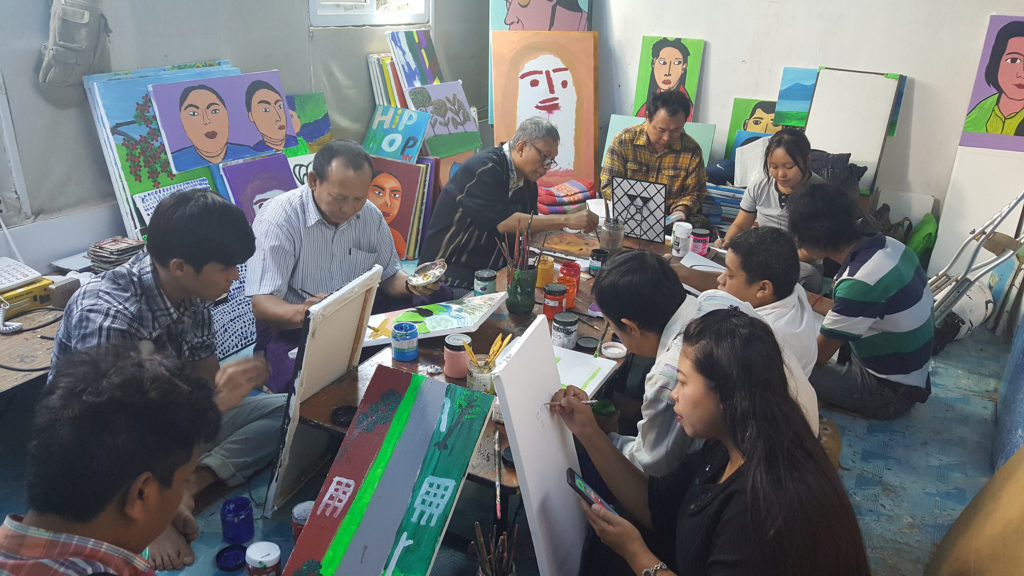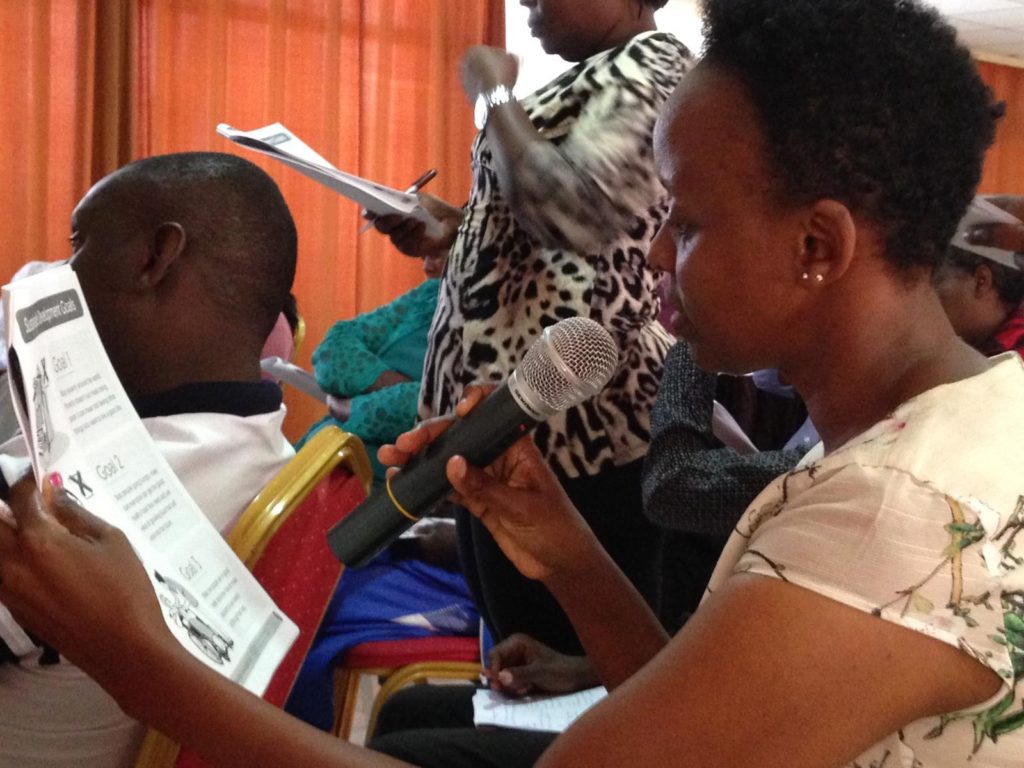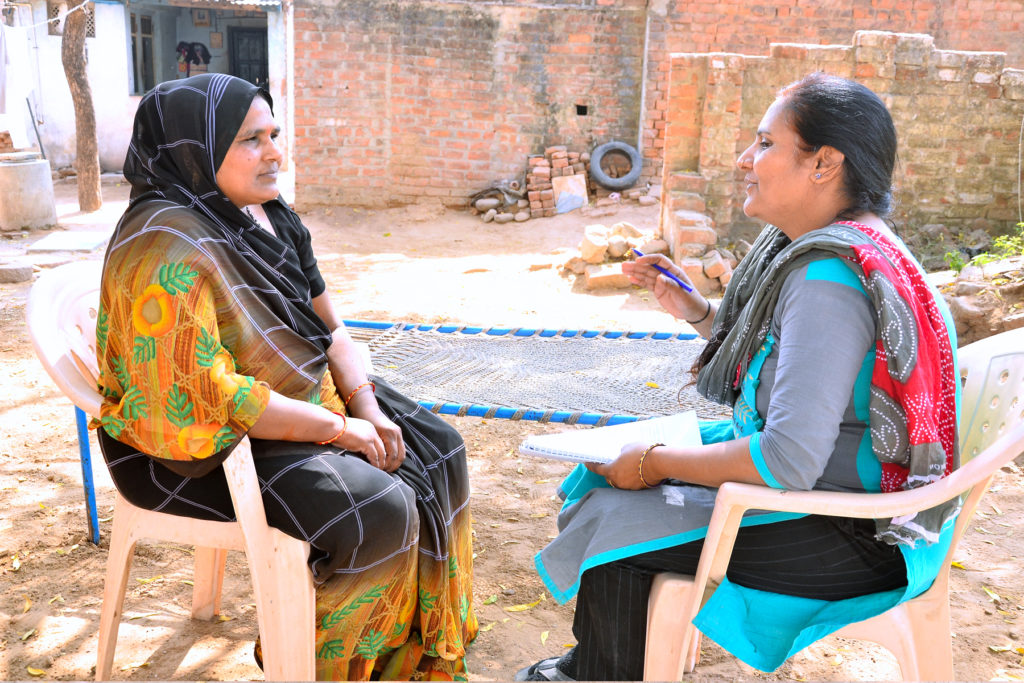Editors note: this article was originally published on Mad In America 10/6/2021
During the past decade, the World Health Organization (WHO) has regularly promoted the goal of improving “global mental health.” While it has often told of the importance of social support and other non-drug alternatives, its efforts helped spread a biomedical standard of care. Western ideas regarding diagnoses, the biological underpinnings of psychiatric disorders, and the regular use of psychiatric drugs have been promoted. Critics of this effort speak of it as a medical colonization.
Today, June 10, the World Health Organization released a 300-page document titled “Guidance on Community Mental Health Services: Promoting Person-Centred and Rights-Based Approaches.” To a large degree, the authors embrace an agenda for change—and a reconception of mental health—that readers of Mad in America will find familiar. The best- practice services highlighted in the document include Open Dialogue as practiced in Tornio, Finland; Soteria Berne in Switzerland; Afiya House in Western Massachusetts; Basal Exposure Therapy in Norway; and Hearing Voices Support Groups, among others.
The WHO guidance emerged from a group at the United Nations led by Michelle Funk, who is head of the Policy, Law, and Human Rights unit at the WHO Department of Mental Health and Substance Abuse. Much as Dainius Pūras, during his time as the UN Special Rapporteur for Health, called for a revolution in mental health, this WHO document calls for wholesale change. The authors write:
Although some countries have taken critical steps towards closing psychiatric and social care institutions, simply moving mental health services out of these settings has not automatically led to dramatic improvements in care. The predominant focus of care in many contexts continues to be on diagnosis, medication and symptom reduction.
Critical social determinants that impact on people’s mental health such as violence, discrimination, poverty, exclusion, isolation, job insecurity or unemployment, lack of access to housing, social safety nets, and health services, are often overlooked or excluded from mental health concepts and practice. This leads to an over-diagnosis of human distress and over-reliance on psychotropic drugs to the detriment of psychosocial interventions – a phenomenon which has been well documented, particularly in high-income countries. It also creates a situation where a person’s mental health is predominantly addressed within health systems, without sufficient interface with the necessary social services and structures to address the abovementioned determinants.
As such, this approach therefore is limited in its consideration of a person in the context of their entire life and experiences. In addition, the stigmatizing attitudes and mindsets that exist among the general population, policy makers and others concerning people with psychosocial disabilities and mental health conditions – for example, that they are at risk of harming themselves or others, or that they need medical treatment to keep them safe – also leads to an over-emphasis on biomedical treatment options and a general acceptance of coercive practices such as involuntary admission and treatment or seclusion and restraint.
The WHO document lays out a three-fold approach to “rethinking” mental health services. The authors argue that countries need to adopt a human rights approach as a governing principle, adopt person-centered conceptions of recovery, and embrace services that provide environmental and psychosocial supports for people struggling with mental health issues.
Human Rights as a Governing Principle
In 2008, the UN Convention on the Rights of Persons with Disabilities (CRPD) came into force. It has now been ratified by 181 countries (but not the United States.) The CRPD declares that people with disabilities should enjoy the same rights and fundamental freedoms as everyone else, and, in essence, bans forced hospitalization and forced treatment.
However, the WHO authors note that none of the ratifiers of the CRPD have adopted policies and laws that are “fully aligned with this CRPD requirement.” A human rights approach to mental health, they state, requires the “creation of services free of coercion.” They detail the harm that comes from forced treatment:
The perceived need for coercion is built into mental health systems, including in professional education and training, and is reinforced through national mental health and other legislation. Coercive practices are pervasive and are increasingly used in services in countries around the world, despite the lack of evidence that they offer any benefits, and the significant evidence that they lead to physical and psychological harm and even death. People subjected to coercive practices report feelings of dehumanization, disempowerment, being disrespected and disengaged from decisions on issues affecting them. Many experience it as a form of trauma or re-traumatization leading to a worsening of their condition and increased experiences of distress. Coercive practices also significantly undermine people’s confidence and trust in mental health service staff, leading people to avoid seeking care and support as a result. The use of coercive practices also has negative consequences on the well-being of the professionals using them.
In the biomedical model, people with severe “mental illness” are said to suffer from anasognosia, a lack of insight into their illness, and this becomes the stated justification for forced hospitalization and treatment. This is what gives society and providers guardianship power over those with mental health issues and disabilities.
This WHO document, by urging societies to create services free of coercion and to enact laws and policies that prohibit such coercion, is supporting a radical change in global mental health services. Banning forced hospitalization and treatment would dramatically change the existing power structure that supports the biomedical model, and alter the tenor of all mental health care.
Reconceptualizing “Recovery”
The biomedical model of mental health is an “illness” model, and thus the notion of recovery is associated with a reduction of symptoms. The individual is in recovery from a disease, and psychiatric drugs are understood to be a first-line treatment to help people recover in this way.
The WHO authors argue that service providers need to adopt a different understanding of recovery, one that arises from listening to those with lived experience. What do they want for themselves? What are their goals? What do they see as their needs? They dub this a “recovery approach.”
The recovery approach does not solely depend on mental health services. Many individuals can and do create their own pathway to recovery, can find natural and informal supports among friends and family and social, cultural, faith-based and other networks and communities, and can join together for mutual support in recovery. However, introducing the recovery approach within mental health service settings is an important means to ensure that the care and support provided to people who wish to access services considers the person in the context of their entire life and experiences.
Although the recovery approach may have different names in different countries, services adopting this approach follow certain key principles. Such services are not primarily focused on ‘curing’ people or making people ‘normal again’. Instead these services focus on supporting people to identify what recovery means to them. They support people to gain or regain control of their identity and life, have hope for the future, and live a life that has meaning for them – whether that be through work, relationships, community engagement or some or all of these. They acknowledge that mental health and wellbeing does not depend predominantly on being ‘symptom free’, and that people can experience mental health issues and still enjoy a full life .
Model Programs
The WHO guidance tells of a need for societies to develop mental health services that are non-coercive and abide by the human rights principles set forth in the CRPD, and that promote the person-centered recovery described above. The publication features 22 such programs. While “none is perfect,” the authors write, “these examples provide inspiration and hope as those who have established them have taken concrete steps in a positive direction towards alignment with the CRPD.”
Here is a brief description of each model program:
Alternatives to hospitalization: crisis centers
Afiya House in Massachusetts. This peer-run respite center opened in 2012 and supports people in distress, and thus serves as an alternative to hospitalization. It is operated by the Wildflower Alliance (formerly the Western Mass Learning Community), which is staffed by those who identify as peers, having faced their own “life-interruption challenges, such as psychiatric diagnoses, trauma, homelessness, problems with substances, and other issues.” Afiya House can accommodate three people at any one time, and people in crisis can stay for up to seven nights. Video link.
Link House in Bristol, United Kingdom. Established in 2010, Link House is a residential center for women who are experiencing a mental health crisis and are either homeless or unable to live at home due to mental health issues. The house, with a shared kitchen and garden, has space for 10 women at a time, who can stay for up to four weeks. It is designed as an alternative to admission into a psychiatric hospital. The focus is on social support, rather than “medical” care. Video link.
Open Dialogue Crisis Service in Lapland, Finland. This outpatient service provides a psychotherapy-based intervention for individuals in Western Lapland who present with a mental health crisis. The service team consists of 16 nurses, a social worker, a psychiatrist, a psychologist, an occupational therapist, and a secretary. The psychotherapy “attempts to promote the client’s potential for self-exploration self-explanation, and self-determination.” Video link.
Tupu Ake in South Auckland, New Zealand. Established in 2008, this “recovery” house, which is staffed by peers, provides an alternative to hospitalization. It can accommodate 10 people who are in crisis for stays of up to one week. It also provides a day support program for up to five people. Video link.

Hospital-based mental health services
Basal Exposure Therapy Unit at Blakstad Hospital in Asker, Norway. This unit is equipped with six beds and provides psychosocial care called basal exposure therapy (BET) to people with complex mental health conditions who have not benefitted from conventional care. BET focuses on the acceptance of frightening thoughts, feelings and inner experiences as a way to self-regulate and cope with existential challenges; and it seeks to help patients reduce or taper from psychiatric medications. Video link.
Kliniken Landkreis Heidenheim General Hospital in Germany. In 2017, the hospital introduced a flexible, user-oriented, and community-based mental health service that has been cited for its focus on the prevention of coercion. Everyone, including those detained in the hospital, has the right to refuse medication, and from 2011 to 2016, no patient was forced to take a psychiatric drug. Since that time, due to court orders, about one person per year has been forcibly treated with medication at the hospital. Video link.
Soteria in Berne, Switzerland. In operation since 1984 and modeled after the Soteria House that operated in California during the 1970s, Soteria Berne offers a hospital-based residential crisis center for those experiencing extreme states (or who have a diagnosis of psychosis or schizophrenia.) The Berne House is located in a residential area and has 10 bedrooms for individuals and two staff members. Residents may stay for up to three months. The Soteria philosophy is that “being with” others during a crisis can be therapeutic, with low or no use of antipsychotic medication. Video link.
Community mental health centers
Aung Clinic in Yangon, Myanmar. This clinic provides an extensive array of outpatient support services that are designed to help people stay out of hospitals and long-stay institutions. The staff, which includes five peer support employees, work closely with schools, employers, and local organizations to help service users participate in community activities. Art exhibitions allow service users to sell their art. There is also a weekly cooking club and support for training in literacy, mathematics, money management, and carpentry. Video link.

CAPs III in Sao Paulo, Brazil. Community based mental health centers in Brazil were established to serve as alternatives to psychiatric hospitals. CAPs III in Sao Paulo provides a house-like environment where people in crisis can stay for up to 14 days. The center uses a rights-based and people-centered approach to psychosocial care that is designed to promote autonomy, address power imbalances, and increase social participation. Video link.
Phoenix Clubhouse in Hong Kong. This is part of an international network of clubhouses that provide community-based vocational and educational support to people who have used mental health services. The Hong Kong house has operated since 1998 and helps people stay out of hospitals while achieving social, financial, and vocational goals. Video link.
Peer support mental health services
Hearing Voices support groups. The Hearing Voices Movement began in the Netherlands in the late 1980s. There are now Hearing Voices networks in 30 countries. A fundamental tenet of the Hearing Voices movement is that hearing voices is a normal part of human experience, and that rather than have their voices suppressed by medication, people should be encouraged to develop their own understanding of their voice-hearing experiences. Video link.
Users and Survivors of Psychiatry in Kenya. USP-K is a national, membership-based organization that relies on peer support groups to bring together people with psychosocial disabilities and mental health conditions. The groups seek to support, promote, and advocate for the rights of individuals to live and work as ordinary members of their communities

Peer Support South East Ontario in Canada. This organization provides peer support at five hospitals in Southeast Ontario, and one-to-one peer support for people after their discharge from the hospital. The peers provide assistance, friendship, and support for up to a year after a person’s discharge, seeking to minimize the risk of rehospitalization. Video link.
Community outreach mental health services
Atmiyata in Gujarat, India. Established in 2017, this community volunteer service supports people experiencing emotional distress in rural communities of Gujarat state in western India. Shared compassion is the core tenet of their work, as they seek to build community acceptance of people struggling with mental health conditions and provide them with access to social care benefits. Video link.

Friendship Bench in Zimbabwe. Established in 2006, the Friendship Bench relies on lay counsellors to support people experiencing emotional distress. The outreach service offers empathy, local community and cultural knowledge, and formal problem-solving techniques. The free counseling service is linked to the local primary health care center, and is usually delivered outside on a wooden bench. Video link.
Home Focus in West Cork, Ireland. Established in 2006, this service provides practical and emotional support to people with mental health conditions living in rural areas. Team members include people with lived experience. The team focuses on helping people remain active in their communities, develop independent living skills, and access education and employment opportunities.
Naya Daur in West Bengal, India. This is a flagship project of a Kolkata-based NGO, and it seeks to provide community-based support, treatment, and care for homeless people who have a mental health condition or psychosocial disability. A primary focus is helping people connect with their local communities in a supportive way and helping them develop long-term relationships. Video link.
Personal Ombudsman, Sweden. The personal ombudsman system in Sweden was launched in 2000. Personal ombudsmen are trained social workers, lawyers, or have a background in medicine, nursing, psychology, or psychotherapy. Each personal ombudsman works with 13 to 20 clients at a time, providing assistance with family matters, health care, housing, finances, employment, and community integration. The service has been described as a “professional friendship.” Video link.
Supported living services
Hand in Hand Supported Living in Georgia. This NGO provides independent community living facilities for people with long-term psychosocial disabilities, including people who have been previously institutionalized. Hand in Hand has opened six houses in Gurjanni and Tbilisi that accommodate a total of 30 adults. Residents prepare food, take care of the house and garden, participate in hobbies, attend various cultural events, and are encouraged to interact with their neighbors. The homes were established after the country, in 2015, established a five-year plan for deinstitutionalization of its mental health system. Video link.
Home Again in Chenai, India. Founded in 2015, Home Again provides housing for women with long-term mental health conditions who are homeless or living in poverty in three states of India: Tamil Nadu, Kerala, and Maharashtra. The service is driven by a belief that living in the community in a family or home-like environment is a basic human right. People using the service are encouraged to engage with all aspects of community living, including work, leisure, recreation, and social opportunities. Video link.
KeyRing Living Support Networks, UK. Since 1990, KeyRing has provided supported living services for people with mental health conditions and psychosocial disabilities in more than 100 communities across England and Wales. Each network manages 10 or so homes within walking distance of each other so that residents can connect with each other and become more involved in the community. Video link.
Shared Lives in Great Britain and Northern Ireland. Shared Lives is a state-supported form of social care that operates throughout the United Kingdom, which provides people with support in a community environment. Shared Lives Carer Families provide supported living arrangements to people in crisis, providing an alternative to hospitalization. Video link.
A New Narrative
Although the models of “good care” identified in the WHO document operate in different environments, all share a similar philosophy: a respect for the autonomy of the individual experiencing mental health difficulties, and a belief that providing homelike shelters and a connection to the community, with opportunities for developing friendships, can help people achieve a type of recovery that is meaningful for them.
The WHO guidance doesn’t spend much energy criticizing the biomedical model of care, but there is an implicit message in all of its pages: that model of care has failed, and what is needed now is a fundamental rethinking of what is possible. The authors write:
A fundamental shift within the mental health field is required, in order to end this current situation. This means rethinking policies, laws, systems, services and practices across the different sectors which negatively affect people with mental health conditions and psychosocial disabilities, ensuring that human rights underpin all actions in the field of mental health. In the mental health service context specifically, this means a move towards more balanced, person-centered, holistic, and recovery-oriented practices that consider people in the context of their whole lives, respecting their will and preferences in treatment, implementing alternatives to coercion, and promoting people’s right to participation and community inclusion.
This is the very call for change that Mad in America has been promoting since its inception. Mad in America board member Olga Runciman is named in the WHO guidance as one of the experts who provided “strategic direction” for this policy declaration. Others who have blogged for Mad in America or have been interviewed on MIA podcasts—such as Sera Davidow and Pat Bracken—contributed to the report.
The WHO report makes for a landmark event. It tells of how the World Health Organization, following in the footsteps of the United Nations Convention on the Rights of Persons with Disabilities and the work of former UN Special Rapporteur for Health Dainius Pūras, is now calling for profound change. A global rethinking of mental health is clearly underway, and the model programs highlighted in this WHO publication, most of which are of fairly recent origin, tell of real-world initiatives that are springing up everywhere.



